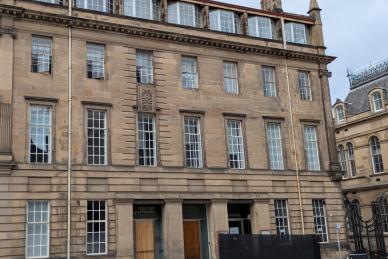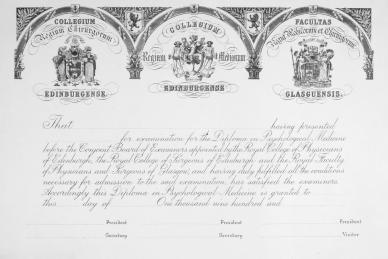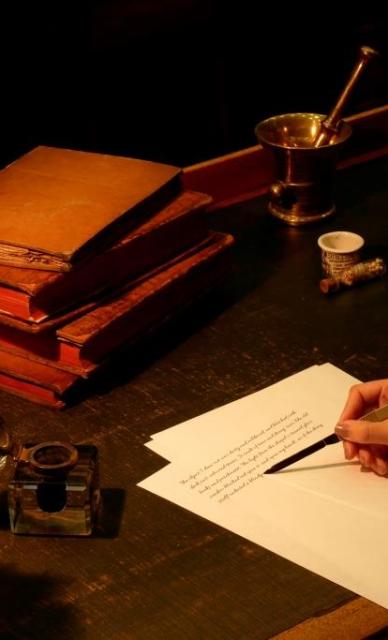Physicians' Gallery Newsletter
Updates on upcoming events, exhibitions and online stories
Sophia Jex-Blake established The Edinburgh School of Medicine for Women in 1886.
At that time, Jex-Blake was already well known for having been the driving force behind the Edinburgh Seven – the first group of matriculated female students at any British university. These women had not been permitted to graduate – opposed by many male students, blocked by the university and defeated at the Court of Session.
The School took out advertisements for its courses in Edinburgh newspapers, offering ‘Science Classes for Ladies’. Women travelled from across Britain, as well as India, Australia, South Africa and the United States, to study there.
This earliest school for women was followed by others – first the Edinburgh College of Medicine for Women in 1889 and then another women’s school 20 years later.
The Royal Infirmary of Edinburgh, the city’s main teaching hospital, refused access to the female students from the school. Instead, Jex-Blake arranged with Leith Hospital for her students to have clinical teaching there.

Edinburgh School of Medicine for Women
30 Chambers Street
Click on any of the below names to explore the stories behind some of the prominent graduates from the Edinburgh School of Medicine for Women.
A controversial Act of Parliament, passed in 1876, had permitted women to work as physicians in the United Kingdom. But there was a catch - women were allowed to practice in Britain, but not to graduate from any British university. British women were forced to travel to continental Europe to study at one of the few universities there which permitted women students. Jex-Blake, for example, had travelled to Switzerland to get her medical degree from Bern.
The Triple Qualification was established in 1884. This was a qualification granted jointly by the three Scottish colleges – the Royal College of Physicians of Edinburgh, the Royal College of Surgeons of Edinburgh and the Royal College of Physicians and Surgeons of Glasgow. Anyone who was awarded the Triple Qualification was a licenced practitioner and had the right to join the Medical Register and call themselves a physician, even if they were not a university graduate.
The Royal Colleges recognised the courses which were taught at a number of non-university teaching institutes, including the schools for women.
The regulations of the Triple Qualification required that ‘the curriculum and examination shall be of the same standard for both sexes’ and that the qualification was open ‘to women equally with men’. No equivalent qualification was available to women in England for a further 24 years.
The curriculum was broad and mandatory. Medical students might have studied at one or more of the available European schools or universities, but they were still required to take the Triple Qualification courses for a minimum of a year before receiving their licence. The mandatory subjects included chemistry, anatomy, physiology, pharmacy, forensics, paediatrics and pathology.

The Triple Qualification
Image credit: The Royal College of Surgeons of Edinburgh
The Triple Qualification didn’t only provide a necessary pathway for women to enter the medical profession. It also offered an opportunity to doctors fleeing occupied and war-torn countries. During the 1930s, when large numbers of Jewish people were forced out of much of continental Europe, there was a significant increase in the numbers of Triple Qualification candidates with Jewish names and European medical degrees. This qualification was the only way they could gain a medical qualification which was recognised in Britain.
At this time, the three Scottish colleges resisted attempts by the General Medical Council to restrict the number of European doctors which were admitted to the programme.

Updates on upcoming events, exhibitions and online stories